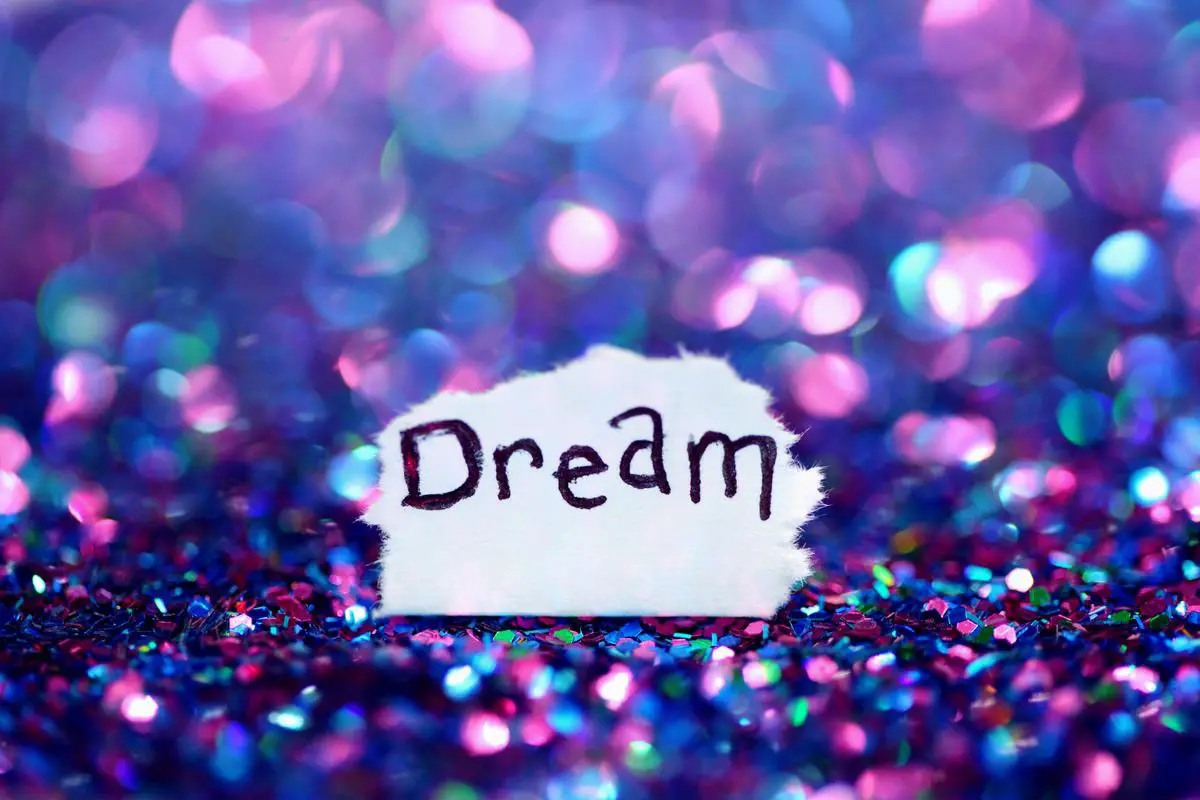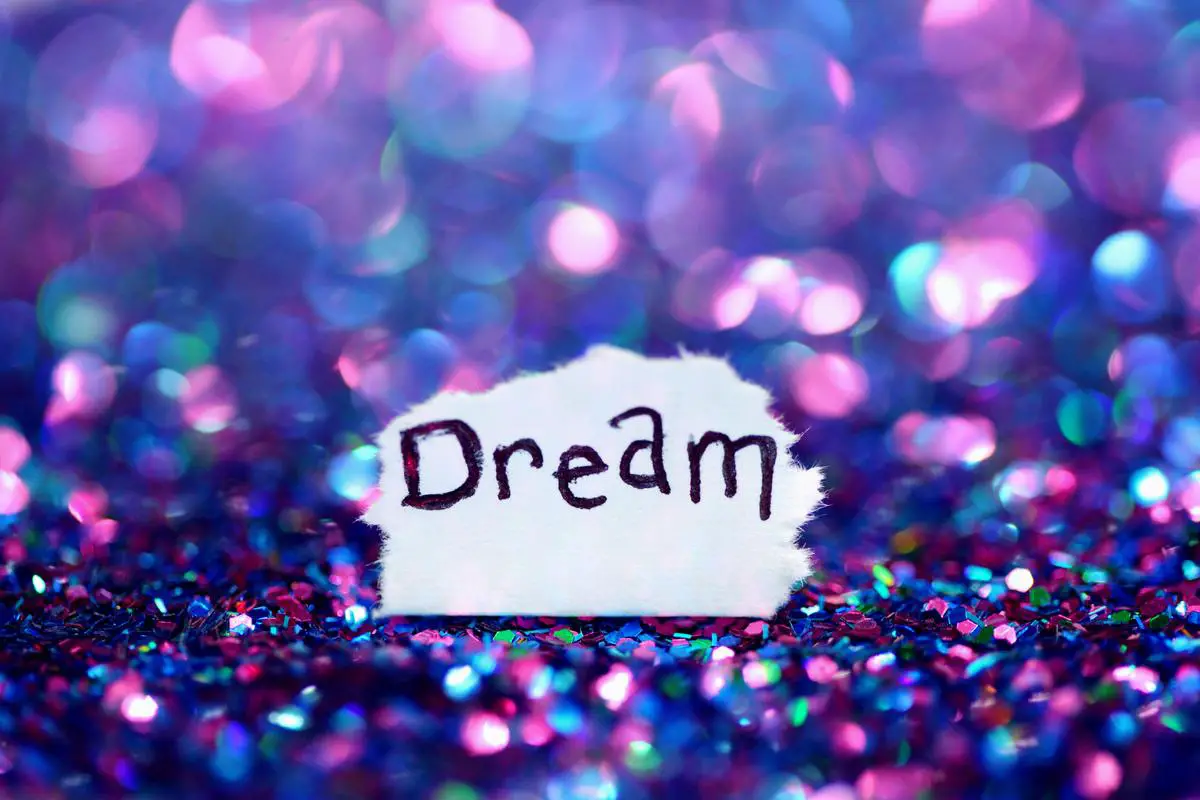Human dreams, a fascinating medium of our unconscious mind, have been a subject of intrigue, art, and scientific exploration for centuries. The symbolism present in dreams, and more specifically, the representation of people therein significantly contributes to the multifaceted field of dream interpretation. Drawing from the theoretical foundations of Sigmund Freud and Carl Jung, alongside modern approaches such as cognitive, neuroscientific, and evolutionary dream theories, our capacity to decipher the intricacies of these sleeping vignettes increases. By delving into the character symbolism within our dreams, exploring the cultural underpinnings that influence dream symbols and understanding the distinction between personal and collective symbols, we can forge a profound, nuanced comprehension of this complex phenomenon.
Theoretical Foundation of Dream Analysis
Title: Exploring Theories of Dreams in Psychology and Psychoanalysis
Humans have been fascinated by dreams for thousands of years, but empirical understanding of their nature and function has been the remit of science for a significantly shorter period. Psychology and its offshoot, psychoanalysis, offer us diverse insights into this captivating phenomenon of the sleeping mind.
Freudian Theory of Dreams
Sigmund Freud, the founder of psychoanalysis, postulated that dreams were the “royal road to the unconscious.” For Freud, dreams represent repressed desires, particularly of a sexual nature, and function as a kind of symbolic fulfilment. Often, dreams are subject to the process of “dream work” where the mind distorts and camouflages these desires to make them palatable to the dreamer’s conscious mind. This dream work involves displacement, condensation, symbolism, and secondary elaboration, producing the dream’s manifest content from the latent dream thoughts.
Jungian View of Dreams
Carl Gustav Jung, once a close collaborator of Freud’s, later developed distinct theories about dreams. He thought of dreams as a way of communicating and acquainting oneself with the unconscious. Dreams, for Jung, were not merely attempts to disguise repressed desires but rather aimed at conveying a meaningful message from the unconscious to the conscious mind. Dream figures were part of the collective unconscious, a shared psychic structure which manifests via symbols and archetypes in dreams.
Hobson and McCarley’s Activation-Synthesis Hypothesis
A considerable paradigm shift took place in the 1970s, with the activation-synthesis theory proposed by the neuroscientists Allan Hobson and Robert McCarley. They hypothesized that dreams result from the random activation of memories in the brain during rapid eye movement (REM) sleep. Instead of manifesting repressed desires or profound revelations, dreams according to this model, are the brain’s attempt to make sense of random neural firings, leading to disjointed narratives.
Cognitive Theory of Dreams
The cognitive theory is founded on the belief that dreams are a cognitive process, meaning they are a product of our thoughts and memories. Particularly, it focuses on the temporally organized, story-like progression of dreams. Central to this theory is the concept that dreams are a reflection of waking-life experiences. Contrary to Freudian views, this theory suggests that dreams could contain unmasked, direct portrayals of personal conceptions and events.
Threat Simulation Theory
The threat simulation theory, proposed by Antti Revonsuo, contrasts significantly with other theories. Revonsuo posits that dream consciousness is essentially an ancient, biologically adaptive mechanism to simulate threatening events. In essence, dreams serve as a virtual reality in which a person can rehearse dealing with dangers.
Each theory brings a unique lens through which to view the curious phenomena of dreams—be it as outlets for repressed desires, messages from the unconscious, the brain’s interpretive responses to random neural activity, extensions of cognitive processes, or threat simulations. Collectively, these theories paint a multi-faceted picture, not only of the mental activity during sleep but of the human mind itself. The continuous investigation into the realm of dreams propels forward our understanding, mirroring the relentless quest for knowledge that defines both psychology and psychoanalysis.

Photo by jannerboy62 on Unsplash
Interpretation of People in Dreams
Deciphering Dream Symbols: The Human Image in the Lace of Sleep
While we have deliberated on prominent theories regarding the analysis of dreams, one element often springs up on the dissection table of our nocturnal brain-play – the apparitions of people. Faces we recognize, strangers we never met, or individuals as vague as shadow figures. They roam our dreamscapes, embedding themselves within fantastic narratives. Such symbols, less tangibly quantitative, yet profoundly qualitative, fuel our curiosity to delve deeper.
Connected to our evolutionary roots, the dream appearances of our wild predecessors and their symbolic implications within the Paleolithic context are revealing. Anthropologists suggest these imagery may have been survival measures, prompting vigilance against potential threats from rival tribes or predators. Thus, people could represent different figures depending on the relation to the dreamer, mirroring real-life tensions or signaling potential threats.
The broad school of psychoanalysis extends a layered meaning to individuals in dreams, partially anchored in the deeply personal sphere of the dreamer’s life. In the Oedipal context, for instance, dreaming of one’s mother or father might absolve latent incestuous tendencies or desires for parental proximity and affection. Albeit controversial, these interpretations hold their place in the annals of dream research.
Conversely, from a neurobiological perspective, dreaming of people could be an inherent attribute of the social brain. A byproduct of humans being naturally social creatures, it brain involuntarily mimics our daily social interactions during sleep. This partially explains why familiar faces often populate our dreams.
Furthermore, neuroscience has presented the Default Mode Network (DMN), a network of interacting brain regions, as the orchestrator behind faces seen in dreams. The DMN’s function in social cognition research provides a biological underpinning for the recurrent images of people in our dreams.
In the clinical realm, Gestalt dream theory suggests that dream figures might manifest as parts of our personality that we have disowned or ignored. Here, the other person is seen as a reflection of self, demonstrating qualities or characteristics of our own persona that need to be recognized and reconciled.
In cognitive dream theory, people are conduits of problem-solving or emotional processing. Their presence might be a reflection of our anxieties, worries, or unresolved emotions prompting us towards resolution. They become symbolic metaphors masking the mind’s workings on a subconscious level.
Finally, from the transpersonal domain, dream figures could be emissaries from the spiritual realm—guides and gurus imparting wisdom or initiating conversations with our higher selves. In such interpretations, these figures serve as doorways to transcendent experiences.
In conclusion, the interpretation of human symbols in dreams is as diversified as our dream narratives themselves. Straddling between hard-core biology and metaphysical expanse, they remind us that dreams continue to be a fascinating sphere of study, a nebula where neuroscience and philosophy collide, spawning silent sonnets of surreal sleep.

Influence of Cultural Identity on Dream Symbols
Emerging methodologies now make it possible to incorporate cultural identity into the interpretation of dreams. One primary sphere where this can be seen is the interpretation of people as symbols in dreams. Cultural identity, which is woven into individuals at the intersection of national, ethnic, religious and other social identities, provides a distinctive lens. This lens colors dream interpretation just as it refracts our waking perception of the familiar world.
Relevant research underscores that dream interpretation, particularly relating to symbols, has a cultural specificity that the existing theories could be overlooking. This elucidates the importance of taking this cultural variability into account when we try to understand the complex symbolism of dreams. As Anthony Stevens reiterated in his Jungian-based studies, culture may significantly impact the collective unconscious thus modifying the archetypes we all share.
Exploring Cultural Context in Dream Analysis further, the question arises, how do dreamers of different cultural backgrounds interpret other people appearing in their dreams? Indigenous societies, for instance, often assign substantial significance to the presence of people in dreams. Investigators suggest ethno-methodological approaches to dream analysis at this point. Internalizing that one’s worldview, including one’s beliefs about dreams and dreamers, is definitively shaped by their cultural environment is likely to generate new insights. A comprehensive reassessment of commonly used dream symbols may be worthwhile, given the potential cultural variability.
In more multicultural societies, where different cultures collide and coalesce, complexities deepen. Immigrants’ dreams, clinically observed, are inevitably affected by their experiences of migration. Dream characters might symbolize lost loved ones or represent fears and anxieties related to the migration process. In this context, understanding the dreamer’s cultural history and current cultural identity becomes an essential part of the dream analysis process.
The reinterpretation of dream theory through the lens of cultural identity has valuable implications not just for psychology and neuroscience, but also for philosophy, anthropology, and sociology. Cultural psychologists have proposed an ‘emic’ approach for dreams, signifying a perspective that’s culture specific, in contrast to the largely ‘etic’, or universal, methods available.
In conclusion, while theories such as Freudian or Jungian interpretations, the Activation-Synthesis hypothesis or Cognitive Theory, provide a solid framework for dream analysis, cultural identity adds yet another layer that demands serious consideration. Our cultural backgrounds influence the symbols that manifest in dreams, including people. The understanding that culture is integral to dream interpretation is not just academic; it bears potential implications for therapeutic practices, enhancing the scope for culturally sensitive and individualized treatment.

Personal and Collective Symbols of People in Dreams
Distinguishing between personal and collective symbols in dreams alludes to the differentiation between individual and shared experiences—representative of microcosm vs. macrocosm. A nuanced understanding of these is crucial to navigating the labyrinth of dream interpretation.
Personal symbols in dreams are intimately tied to the life experiences, memories, and emotions of the individual. These can be traced back to formative influences in one’s life, such as childhood experiences, personal traumas, or outstanding memories. The presence of known characters from one’s life—like a family member, a close friend, or even a personal antagonist—most commonly categorize personal symbols. Thus, personal symbols often reflect the internal psychological state of the dreamer.
Collective symbols, on the other hand, represent shared archetypes or allegories and are consistent across individuals, largely irrespective of personal experience or context. Collective symbols often carry profound, universal meanings, inherited through the legacy of human evolution and shared cultural histories. They tap into the vast, underexplored reservoir of the collective unconscious, to borrow Carl Jung’s phrase.
Famous examples of collective symbols include universally recognizable characters, such as the Wise Old Man or the Great Mother, or universally experienced scenarios, like soaring in flight or being chased. These archetypal symbols are common to humanity, uniting us at the most primordial level of dreaming.
The process of distinguishing between personal and collective symbols in dreams, referred to as ‘amplification’ by Jungians, involves hovering between the dreamer’s personal context and universal symbols. Careful navigation on this dual interpretive plane is crucial to unfold a dream’s multi-layered meanings accurately.
Recent advances in neuroimaging techniques provide promising avenues to explore the neurological underpinnings separating personal from collective symbols. Functional Magnetic Resonance Imaging (fMRI) studies have begun to dissect the role of the hippocampus, for instance, in mediating personal experiences and memories in dreams. Concurrently, the Frontoparietal Control Network’s contribution to collective representations in dreams is under scrutiny.
Considering the anthropological dimension, cross-cultural studies have identified themes transcending cultural boundaries, shedding light on universal dreaming patterns. For instance, ‘chase’ dreams appear relatively constant across cultures, embodying the collective symbol of pursuit, fear, and survival instinct.
Finally, some theorists suggest an ontological implication of differentiating between personal and collective symbols in dreams. Perhaps the dream, in its ability to weave together personal and collective elements fluidly, inherently expresses the intertwined nature of individual and collective human consciousness: the I in the We, and the We in the I, so to speak. This perspective calls for a more integrated approach to the study of dreams—combining psychology, neuroscience, anthropology, by not just bridging the gap between personal and collective symbols, but understanding their intricate fusion.

Photo by sharonmccutcheon on Unsplash
Therapeutic Implications of Dream Interpretation
Unfolding a World Revealed Through Dreams: The Therapeutic Role and Significance of Interpreting People in Dreams
As we engage in the exploration of dreams, it’s imperative to recognize the integral role that people play in these nocturnal narratives. Like the intricate patterns of a woven tapestry, each person encountered in dreams has a unique placement in the overall imagery of the unconscious mind, thus offering a vital contribution to the therapeutic process.
Immersive as they are, dreams offer a captivating journey into realms of the subconscious and unconscious mind. Therapy often leans into this nebulous terrain, utilizing the myriad faces present in dreams as catalysts for introspection and psychological healing.
Expanding on the previously discussed theories and perspectives, let’s delve into some of the more nuanced concepts. The Adaptive Theory of Sleep and Dreaming, posited by Antti Revonsuo, emphasizes the potentially adaptive, evolutionary role of dreams. This theory suggests that dream characters represent real-world counterpart relationships, enabling the dreamer to virtually practice social and survival based scenarios with potential threats or conflicts, hence, honing the dreamer’s problem-solving and emotional resilience skills in awake reality.
In dream-telling sessions as part of therapy, recounting interactions with dream figures can provide insights regarding the individual’s social interactions, self-perception and mental wellbeing. Therapists may also consider the Emotional Selection Hypothesis proposed by Patrick McNamara, which postulates dreams as modulators of emotional biases through the selection and prioritization of emotional stimuli represented by dream characters.
The advent of neuroimaging has indeed opened a new frontier in dream research. The saliency network encompassing the anterior insula and dorsal anterior cingulate cortex has been implicated in emotional and cognitive processing during dreaming, further supporting the role of dream characters in emotional fine-tuning. Dream characters, coded with emotional significance, may thus trigger activation in these brain regions, giving rise to intense dreams that may then be creatively worked upon in therapy.
However, it’s essential not to overlook the influence of an individual’s personal experiences and archetypal narratives. Archetypal figures in dreams, such as the hero, the mentor, or the trickster, for instance, are deeply ingrained aspects of the collective unconscious as proposed by Carl Jung. They influence the way we perceive our reality and interpret our experiences, which is subsequently reflected in dream scenarios. Recognizing these archetypes can significantly deepen one’s understanding of their self and their relationships.
People in dreams might also serve as a reminiscence of interpersonal relationships. Dr Allan Hobson’s Dream Science hypothesis indicates that the brain’s memory-recalling mechanisms during rapid eye movement (REM) sleep, primarily mediated by the hippocampus, might be instrumental in the appearance of known faces in dreams. These memory-inspired dream figures could reveal unconscious feelings about these individuals or situations related to them.
Attention must also be given to understanding the individual’s contextual cultural symbolism. Weaver of dreams, the brain, weaves individuals and their emotions into dreams and creates a tapestry of one’s cultural ethos. Further, cultural symbols that recur globally in dreams frustrate the concept of dream characters being solely a personal manifestation, reinforcing the need for a culturally sensitive treatment approach.
Deciphering dream figures merits a blend of an individual’s cultural, personal, and collective narratives. As we better appreciate the complex, multi-layered engagement between dream characters and dreamers, it is evident that the role these figures play extends beyond mere nighttime entertainment and venture into the realm of therapy and self-understanding.

Photo by sharonmccutcheon on Unsplash
The rich exploration of people in dreams demonstrates the incredible depth and complexity of our unconscious minds. By analyzing these complex layers, we gain introspective tools that aid in personal self-reflection and therapeutic practices. Dream interpretation, especially regarding people, enables us to unravel subconscious conflicts, unearth latent desires, and diagnose certain psychological conditions more accurately. Hence, it is clear that understanding the symbolic representation of people in our dreams can offer illuminating insights into our waking life, bridging the gap between our conscious and unconscious realms. The multi-dimensionality of dreams emphasizes the holistic framework of human cognition and the role it plays in shaping our internal and external realities. As we continue to decode our dreams, we are guided to an unparalleled understanding of ourselves and our world.
